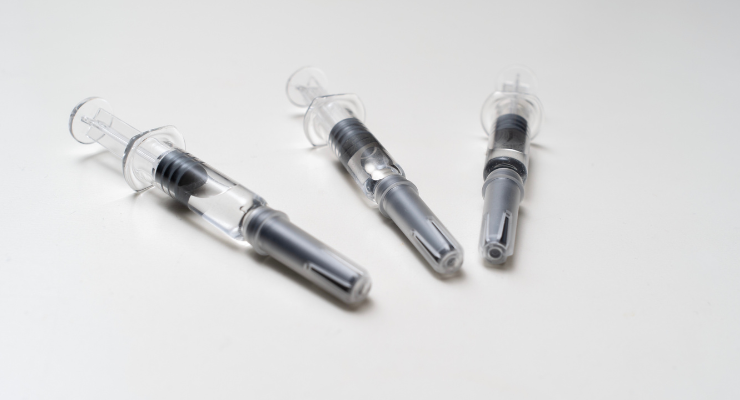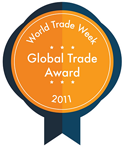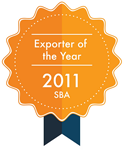In a booming prefilled syringes sector, keeping up with demand has meant more – and more advanced – automation systems.
One of those niches is prefilled syringes, which in recent years have skyrocketed in popularity. Without new, automation-enabling technologies, meeting the newfound demand for prefilled syringes simply would not be feasible; simply put, we’d have a cart with no horse to pull it. Not only has overall demand surged – independent of the COVID-19 crisis, it must be said – but the categories of companies utilizing pre-filled syringe formats have blossomed and branched out.
For instance, compounding pharmacies are a phenomenon that have only come about in the past few years. While many of these are mostly re-packagers and therefore only indirectly tied to drug production, these entities tend to have specialized, even customized needs since they’re filling such a broad range of containers.
The types of pre-filled syringes also have become far more diverse, with various iterations and formats touching a bevy of new areas – entailing not only COVID-19 and other vaccines but medicines for pediatrics, oncology, ophthalmics and veterinary, to name just a few. Let’s explore how technological advances in automation have made prefilled syringes viable on such a large scale, by making their production faster, more precise, and capable of meeting a broad spectrum of patient needs.
Why Prefilled Syringes?
Since most inventions are the offspring of necessities, it’s important to understand the confluence of factors that led to prefilled syringes’ prominence.
Prefilled syringes are simpler and safer for both healthcare providers and patients. The reason is elementary: the fewer steps taken at the point of care, the less chance for injury or error. With prefilled syringes, the correct dose of the proper, clearly-marked medication comes right in its own package or set. Eliminating the need to draw from a vial does away with the potentially severe consequences of a wrong dosage – or, worse, wrong medicine – and exponentially mitigates environmental contamination risks. With small-dose, highly expensive drugs like many biopharmaceuticals, cost also becomes a factor; overfills are wasted product, and wasted product is wasted money.
Prefilled syringes also provide safety benefits to those administering medications. They limit the number of regimen steps conducted with an exposed needlestick, and are far more likely to be equipped with needlestick safety devices proven to significantly reduce unintended jabs. With injectable medications being increasingly administered outside healthcare facility settings, often by comparably unqualified at-home caregivers or the patients themselves, simplicity is key – and prefilled syringes offer that in spades.
Increasingly, government authorities are recognizing the benefits of prefilled syringes. Many, including the U.S. Food & Drug Administration, strongly recommend or even mandate that certain complex or biologic drugs be housed and administered in prefilled syringes. This ensures proper dosage, mitigates contamination risks for these specialty medicines, and paves the way for novel injection formats, such as dual-chamber syringes housing a lyophilized drug in one chamber and its diluent in the next. High-viscosity depot injections and injectable gel dermal fillers are additional examples of scenarios where a prefilled syringe is either the ideal delivery device, or even the only viable one.
Automation in Prefilled Syringe Production
Prefilled syringes confront pharma companies with a manufacturing conundrum: an exponentially growing drug delivery platform with an exceedingly wide range of syringe formats and an inherently challenging, precision-dependent product filling process. It is the antithesis of a one-size-fits-all scenario, but the process nonetheless requires exacting accuracy and, as demand surges, rapid repeatability.
Any attempt of automating prefilled syringe production – either fully or partially (a.k.a. “semi-automatic”) – typically incorporates certain baseline features. For starters, a machine designed for this task should be able to handle a wide variety of syringe formats. This means the ability to handle syringes not only of varying lengths and diameters, but also differing tips and corresponding caps including press-on, luer, and an ever-widening array of safety caps – particularly for oral syringes.
Factors such as syringe type also effect how a syringe is filled. A versatile automated prefilled syringe production system should be “filling agnostic,” capable of filling via ceramic piston, peristaltic pump or direct draw from a reservoir bag. Through-the-tip filling should be given preference over filling through the tail. In addition to being cleaner and less complex (and therefore more cost-effective), through-the-tip filling makes it simpler to insert the piston or plunger before filling, reducing the likelihood of air bubbles in the finished product.
Of course, in an industry where ultra-specialized applications are far from atypical, not all syringe-filling equipment can prioritize flexibility. Dual-chamber syringes and high viscosity drugs are just two areas where automation may require a single-functionality machine, or at least one whose production parameters are comparably narrow. Regardless, the ability to produce 20 or more precisely filled, near-reject-free syringes makes such equipment a no-brainer alternative to manual filling even in small- to medium-batch production settings.
There remain environments where manual syringe filling is still the norm. A clear majority of hospital pharmacies, compounding pharmacies and R&D labs still fill the old-fashioned way, mostly because they don’t have a need for higher-speed, larger-batch production. Still, automating some of the process in these settings still makes sense. After all, the adverse issues with manual filling – heightened risks for errors and contamination, as well as increased labor costs and even repetitive motion injuries, still apply. In these forums, benchtop syringe filling machines can provide a welcome step up from manual operations.
Benchtop units are generally compact, and intuitive to operate. Simplicity is key; for example, a piston mechanism that draws the needle back via the plunger, with the distance the plunger is pulled back dictating the amount of drug filled. Among other benefits, this eliminates the need to clean a metering device. Draw-filling methods such as these bring a number of advantages, including operator safety, easy changeover, and flexible parameters to accommodate a wide variety of syringe sizes and product types. Such units also typically fit under a laminar flow hood, making them suitable for aseptic filling.
As the already broad set of applications for prefilled syringes continues to widen, overall demand will further increase. This growth curve will mandate further innovations in prefilled syringe automation, challenging solutions developers to evolve in parallel with market needs. It will take cutting-edge technology to avoid sticking points for a drug delivery device whose potential is nowhere near fully realized.

Deborah Smook, VP of Marketing & Business Development for TurboFil Packaging Machines LLC, a supplier of liquid filling and assembly machines for the pharmaceutical, medical device, health & beauty and chemical industries. In addition to a broad range of standardized equipment, the company frequently collaborates with customers to develop, design and construct customized, built-to-spec machines.




